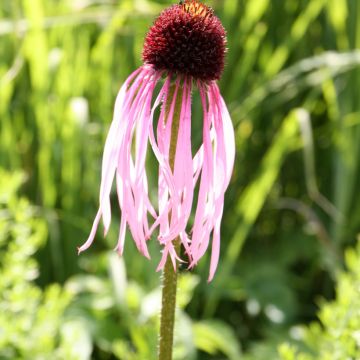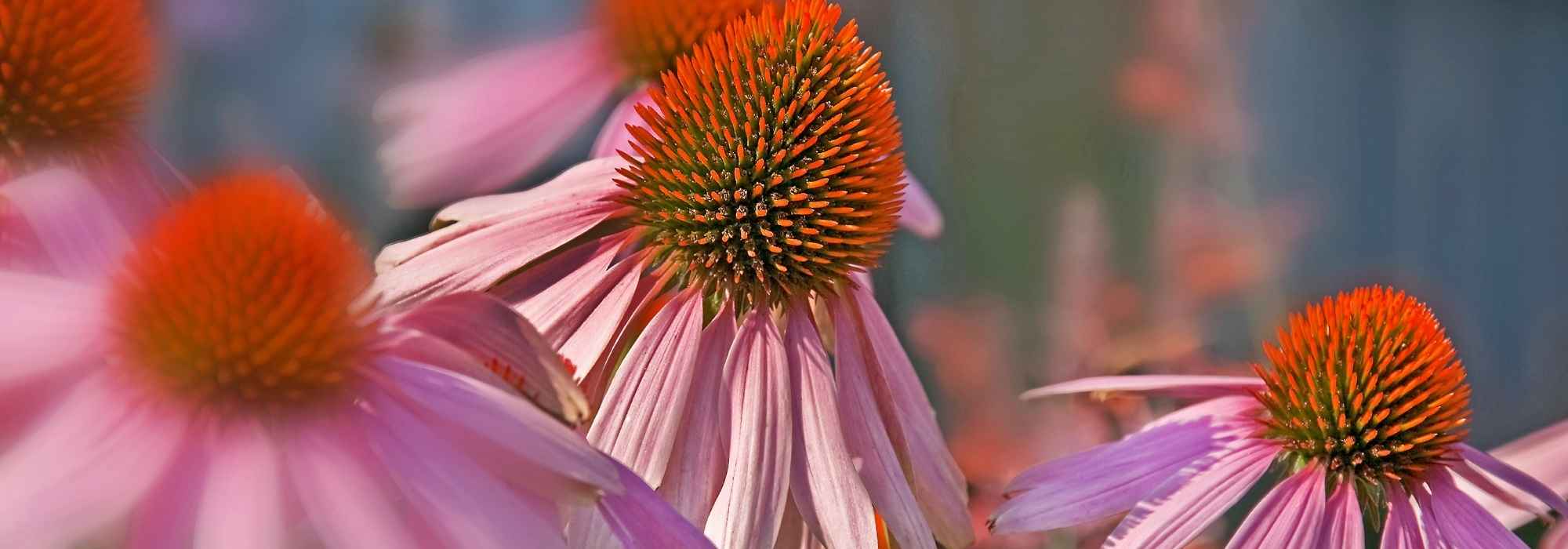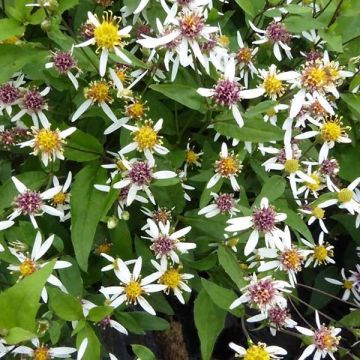

Echinacea purpurea Mellow Yellow
Echinacea purpurea Mellow Yellow
Echinacea purpurea Mellow Yellow
Purple coneflower, Eastern purple coneflower
The young plant has slowly recovered. I have 2 flowers. For a first year, it's not bad. The color looks just like in the photo. I imagined it a bit taller, but maybe it will be next year...
Caroline L, 23/08/2025
Special offer!
Receive a €20 voucher for any order over €90 (excluding delivery costs, credit notes, and plastic-free options)!
1- Add your favorite plants to your cart.
2- Once you have reached €90, confirm your order (you can even choose the delivery date!).
3- As soon as your order is shipped, you will receive an email containing your voucher code, valid for 3 months (90 days).
Your voucher is unique and can only be used once, for any order with a minimum value of €20, excluding delivery costs.
Can be combined with other current offers, non-divisible and non-refundable.
Home or relay delivery (depending on size and destination)
Schedule delivery date,
and select date in basket
This plant carries a 12 months recovery warranty
More information
We guarantee the quality of our plants for a full growing cycle, and will replace at our expense any plant that fails to recover under normal climatic and planting conditions.
Would this plant suit my garden?
Set up your Plantfit profile →
Description
The Echinacea purpurea 'Mellow Yellows' is a coneflower that bears fairly tall flowers in a range of yellow shades. Their color varies from opening to fading, from dark mango to pale creamy yellow, passing through dark yellow and canary yellow. This perennial is beloved by butterflies and blooms for a long time, until mid-October, starting from the first year. Its cone-shaped center is orange-brown. The plant, with sturdy stems, maintains a well-defined upright habit in borders while providing good flowers for fresh or dried bouquets.
Native to the western United States, from Georgia to Michigan via Oklahoma and Ohio, Echinacea purpurea (or Rudbeckia purpurea) is a perennial with a strong character. The 'Mellow Yellows' coneflower is a horticultural selection that, once mature, forms an upright clump and measures 80 cm in height and 50 cm in width. This plant does not weaken or collapse, demonstrating excellent stability. The opposite, lanceolate green leaves are covered in rough hairs. The flowering period takes place from July to October, accompanying the blooming of inulas, asters, and ornamental tobaccos, and is highly visited by butterflies. The branched, reddish stems bear at the end of each branch a large inflorescence with a prominent central disc and a conical shape, composed of tiny florets in orange-brown. The cone is surrounded by thin, yellow ligules whose color varies over the weeks, from dark yellow to pale creamy yellow, with a touch of sweet melon yellow. The fruit is an achene that releases seeds that birds are fond of. This plant anchors firmly and deeply in the soil, thanks to its well-developed root system. Its above-ground vegetation is deciduous and dries up in autumn.
The 'Mellow Yellows' purple coneflower is a healthy variety that offers a range of colors on its own, over a long period, to the delight of gardeners. Plant it in large borders and naturalistic or cottage-style garden beds, mixed with other summer flowers for contrasting shapes. Consider yarrows with flat corymbs, generous Phlox, exotic daylilies, and poetic columbines. Plant clusters of lighter asters and voluble grasses with golden spikes. Then create beautiful bouquets of fresh or dried flowers.
The scent of the Echinacea varies depending on the stage of flowering. Initially, when the florets are in an upright crown, the scent is barely perceptible. At full bloom, as the florets droop as if drained of their strength, it emits a delicate honey scent that is very attractive to bees, butterflies, and other insects. Once the head is pollinated, the scent takes on a more vanilla note.
Properties: In homeopathy, its root is used to fight colds and strengthen the immune system. These properties were already used by Native Americans. The name Echinacea comes from the Greek echinos, which means "hedgehog-like or prickly," and acea, meaning "having the shape of," alluding to the flower heads. Purpurea means "purple."
Echinacea purpurea Mellow Yellow in pictures


Flowering
Foliage
Plant habit
Botanical data
Echinacea
purpurea
Mellow Yellow
Asteraceae
Purple coneflower, Eastern purple coneflower
Cultivar or hybrid
Other Echinacea - Coneflower
View all →Planting and care
The 'Mellow Yellows' Purple Coneflower takes its time to establish. Indeed, its growth is rather slow. But in return, once in place, it requires no special care. It is preferably planted in spring, in a sunny location, in a mix of potting soil and garden soil. Purple coneflowers fear waterlogged soils in winter. The soil should be deep and loose to accommodate its root system. Remove faded flowers as they appear. Divide the clump when flowering slows down. It is a rhizomatous plant that can become invasive if it likes its surroundings. As the plant ages, it becomes more susceptible to aphid attacks and powdery mildew. Mulch the base in May to retain moisture in summer, as it is susceptible to drought during the flowering period.
Planting period
Intended location
Care
Planting & care advice
-
, onOrder confirmed
Reply from on Promesse de fleurs
Similar products
Haven't found what you were looking for?
Hardiness is the lowest winter temperature a plant can endure without suffering serious damage or even dying. However, hardiness is affected by location (a sheltered area, such as a patio), protection (winter cover) and soil type (hardiness is improved by well-drained soil).

Photo Sharing Terms & Conditions
In order to encourage gardeners to interact and share their experiences, Promesse de fleurs offers various media enabling content to be uploaded onto its Site - in particular via the ‘Photo sharing’ module.
The User agrees to refrain from:
- Posting any content that is illegal, prejudicial, insulting, racist, inciteful to hatred, revisionist, contrary to public decency, that infringes on privacy or on the privacy rights of third parties, in particular the publicity rights of persons and goods, intellectual property rights, or the right to privacy.
- Submitting content on behalf of a third party;
- Impersonate the identity of a third party and/or publish any personal information about a third party;
In general, the User undertakes to refrain from any unethical behaviour.
All Content (in particular text, comments, files, images, photos, videos, creative works, etc.), which may be subject to property or intellectual property rights, image or other private rights, shall remain the property of the User, subject to the limited rights granted by the terms of the licence granted by Promesse de fleurs as stated below. Users are at liberty to publish or not to publish such Content on the Site, notably via the ‘Photo Sharing’ facility, and accept that this Content shall be made public and freely accessible, notably on the Internet.
Users further acknowledge, undertake to have ,and guarantee that they hold all necessary rights and permissions to publish such material on the Site, in particular with regard to the legislation in force pertaining to any privacy, property, intellectual property, image, or contractual rights, or rights of any other nature. By publishing such Content on the Site, Users acknowledge accepting full liability as publishers of the Content within the meaning of the law, and grant Promesse de fleurs, free of charge, an inclusive, worldwide licence for the said Content for the entire duration of its publication, including all reproduction, representation, up/downloading, displaying, performing, transmission, and storage rights.
Users also grant permission for their name to be linked to the Content and accept that this link may not always be made available.
By engaging in posting material, Users consent to their Content becoming automatically accessible on the Internet, in particular on other sites and/or blogs and/or web pages of the Promesse de fleurs site, including in particular social pages and the Promesse de fleurs catalogue.
Users may secure the removal of entrusted content free of charge by issuing a simple request via our contact form.
The flowering period indicated on our website applies to countries and regions located in USDA zone 8 (France, the United Kingdom, Ireland, the Netherlands, etc.)
It will vary according to where you live:
- In zones 9 to 10 (Italy, Spain, Greece, etc.), flowering will occur about 2 to 4 weeks earlier.
- In zones 6 to 7 (Germany, Poland, Slovenia, and lower mountainous regions), flowering will be delayed by 2 to 3 weeks.
- In zone 5 (Central Europe, Scandinavia), blooming will be delayed by 3 to 5 weeks.
In temperate climates, pruning of spring-flowering shrubs (forsythia, spireas, etc.) should be done just after flowering.
Pruning of summer-flowering shrubs (Indian Lilac, Perovskia, etc.) can be done in winter or spring.
In cold regions as well as with frost-sensitive plants, avoid pruning too early when severe frosts may still occur.
The planting period indicated on our website applies to countries and regions located in USDA zone 8 (France, United Kingdom, Ireland, Netherlands).
It will vary according to where you live:
- In Mediterranean zones (Marseille, Madrid, Milan, etc.), autumn and winter are the best planting periods.
- In continental zones (Strasbourg, Munich, Vienna, etc.), delay planting by 2 to 3 weeks in spring and bring it forward by 2 to 4 weeks in autumn.
- In mountainous regions (the Alps, Pyrenees, Carpathians, etc.), it is best to plant in late spring (May-June) or late summer (August-September).
The harvesting period indicated on our website applies to countries and regions in USDA zone 8 (France, England, Ireland, the Netherlands).
In colder areas (Scandinavia, Poland, Austria...) fruit and vegetable harvests are likely to be delayed by 3-4 weeks.
In warmer areas (Italy, Spain, Greece, etc.), harvesting will probably take place earlier, depending on weather conditions.
The sowing periods indicated on our website apply to countries and regions within USDA Zone 8 (France, UK, Ireland, Netherlands).
In colder areas (Scandinavia, Poland, Austria...), delay any outdoor sowing by 3-4 weeks, or sow under glass.
In warmer climes (Italy, Spain, Greece, etc.), bring outdoor sowing forward by a few weeks.



























































